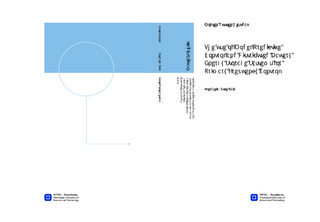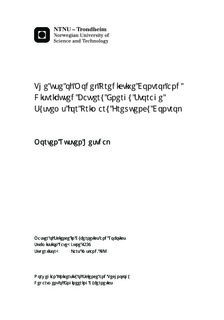| dc.description.abstract | Astheworldsenergydemandrisestogetherwithaglobalawarenessoverclimate-changesdue to burning of fossil fuel, and disasters due to accidents at nuclear power plants, thedemand for renewable energy grows. The two most available sources for renewableenergy are solar power and wind power. However, these energy sources are unreliablesince they only produce power under certain weather conditions. Among other things,fluctuations in the grid frequency of 50Hz increases. Primary Frequency Control is partof the toolbox for frequency control. In order to deliver primary frequency control, aplant with a rectifier, an inverter, and a battery package is needed. Eltek is a power elec-tronics company which delivers backup power solutions for sites with communicationantennas or other communication equipment. This thesis will try to develop a con-trol strategy which controls a number of sites used both for backup power and primaryfrequencycontrol. Thiscontrollerneedstofollowtheregulationsgivenbythetransmis-sion system operator. The transmission system operator operates the power grid and isresponsible for primary frequency control. However, private companies may also par-ticipate. This is done by auctions where several stakeholders make a bid for how muchpower can be delivered for a certain price. The winner of the bidding is allowed to de-liver primary frequency control services for a certain time period.In this thesis, the controller chosen is a model predictive controller. This is an op-timizing control strategy, and the controller should distribute power limits to each site.These limits may be different for up-regulation of the frequency and down-regulationof the frequency, and they should be distributed in such a way that it minimizes thebattery degradation. The models for battery degradation are too complex to be imple-mented in a model predictive controller, hence a simpler model is implemented whichfocuses on one part of battery degradation. The controller developed is simulated ina plant modelled in SIMULINK, which consists of 20 sites with different battery sizes.Eachsiteismodelledafterasitecontrollersuggestedbythedanishtransmissionsystemoperator Energinet.dk. Battery degradation models are also implemented at each site.One for lead-acid batteries and one for lithium-ion batteries. Half the sites uses lead-acid degradation model, and the rest uses the lithium-ion degradation model. Thesemodels are based on part physics part heuristics | nb_NO |

